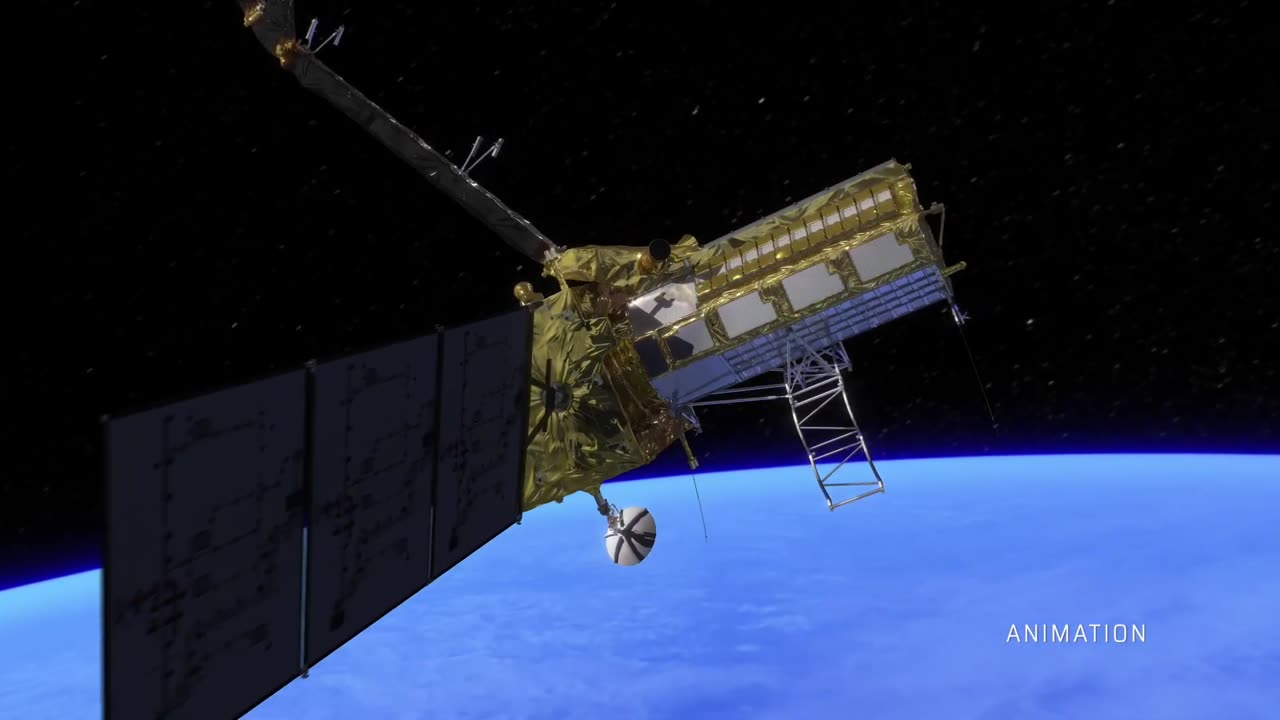Premium Only Content

How Fieldwork in the Amazon Is Supporting NASA Climate Science – NISAR Mission Travelogue
#nasa #amazon #fieldwork #climate #climatescience #science #NISAR #travelogue #nasamission #nasaclimatescience #earthexploration #solar #solarsystem #moon #nisarmission #satellite #satellitemission #spacemission #earth #wolfchamp
How Fieldwork in the Amazon Is Supporting NASA Climate Science – NISAR Mission Travelogue
A joint U.S.-India satellite mission called NISAR – the NASA-ISRO Synthetic Aperture Radar (NISAR) mission – will soon set out with new tools to better understand climate change. As a way to validate the satellite’s global, space-based observations, NASA scientists went to the Peruvian Amazon to install a network of sensors that will help calibrate measurements from the NISAR spacecraft.
Why the Amazon? In tropical wetlands, changes in seasonal flooding cycles can lead to increased production of greenhouse gases like methane and carbon dioxide.
A collaboration between NASA and ISRO (Indian Space Research Organisation), NISAR will use a sophisticated radar system to track wetland inundation and other changes to Earth’s surface. The satellite is expected to launch in early 2024 from ISRO’s Satish Dhawan Space Centre in Sriharikota, India.
For more information on the NISAR mission, visit: https://nisar.jpl.nasa.gov/.
Credit: Video production and NISAR animations: NASA/JPL-Caltech; Methane animations: NASA’s Scientific Visualization Studio; Amazon field work footage courtesy of A. Pruna
How Fieldwork in the Amazon Is Supporting NASA Climate Science – NISAR Mission Travelogue
A joint U.S.-India satellite mission called NISAR – the NASA-ISRO Synthetic Aperture Radar (NISAR) mission – will soon set out with new tools to better understand climate change. As a way to validate the satellite’s global, space-based observations, NASA scientists went to the Peruvian Amazon to install a network of sensors that will help calibrate measurements from the NISAR spacecraft.
Why the Amazon? In tropical wetlands, changes in seasonal flooding cycles can lead to increased production of greenhouse gases like methane and carbon dioxide.
A collaboration between NASA and ISRO (Indian Space Research Organisation), NISAR will use a sophisticated radar system to track wetland inundation and other changes to Earth’s surface. The satellite is expected to launch in early 2024 from ISRO’s Satish Dhawan Space Centre in Sriharikota, India.
For more information on the NISAR mission, visit: https://nisar.jpl.nasa.gov/.
Credit: Video production and NISAR animations: NASA/JPL-Caltech; Methane animations: NASA’s Scientific Visualization Studio; Amazon field work footage courtesy of A. Pruna
How Fieldwork in the Amazon Is Supporting NASA Climate Science – NISAR Mission Travelogue
A joint U.S.-India satellite mission called NISAR – the NASA-ISRO Synthetic Aperture Radar (NISAR) mission – will soon set out with new tools to better understand climate change. As a way to validate the satellite’s global, space-based observations, NASA scientists went to the Peruvian Amazon to install a network of sensors that will help calibrate measurements from the NISAR spacecraft.
Why the Amazon? In tropical wetlands, changes in seasonal flooding cycles can lead to increased production of greenhouse gases like methane and carbon dioxide.
A collaboration between NASA and ISRO (Indian Space Research Organisation), NISAR will use a sophisticated radar system to track wetland inundation and other changes to Earth’s surface. The satellite is expected to launch in early 2024 from ISRO’s Satish Dhawan Space Centre in Sriharikota, India.
For more information on the NISAR mission, visit: https://nisar.jpl.nasa.gov/.
Credit: Video production and NISAR animations: NASA/JPL-Caltech; Methane animations: NASA’s Scientific Visualization Studio; Amazon field work footage courtesy of A. Pruna
How Fieldwork in the Amazon Is Supporting NASA Climate Science – NISAR Mission Travelogue
A joint U.S.-India satellite mission called NISAR – the NASA-ISRO Synthetic Aperture Radar (NISAR) mission – will soon set out with new tools to better understand climate change. As a way to validate the satellite’s global, space-based observations, NASA scientists went to the Peruvian Amazon to install a network of sensors that will help calibrate measurements from the NISAR spacecraft.
Why the Amazon? In tropical wetlands, changes in seasonal flooding cycles can lead to increased production of greenhouse gases like methane and carbon dioxide.
A collaboration between NASA and ISRO (Indian Space Research Organisation), NISAR will use a sophisticated radar system to track wetland inundation and other changes to Earth’s surface. The satellite is expected to launch in early 2024 from ISRO’s Satish Dhawan Space Centre in Sriharikota, India.
For more information on the NISAR mission, visit: https://nisar.jpl.nasa.gov/.
Credit: Video production and NISAR animations: NASA/JPL-Caltech; Methane animations: NASA’s Scientific Visualization Studio; Amazon field work footage courtesy of A. Pruna
How Fieldwork in the Amazon Is Supporting NASA Climate Science – NISAR Mission Travelogue
A joint U.S.-India satellite mission called NISAR – the NASA-ISRO Synthetic Aperture Radar (NISAR) mission – will soon set out with new tools to better understand climate change. As a way to validate the satellite’s global, space-based observations, NASA scientists went to the Peruvian Amazon to install a network of sensors that will help calibrate measurements from the NISAR spacecraft.
Why the Amazon? In tropical wetlands, changes in seasonal flooding cycles can lead to increased production of greenhouse gases like methane and carbon dioxide.
A collaboration between NASA and ISRO (Indian Space Research Organisation), NISAR will use a sophisticated radar system to track wetland inundation and other changes to Earth’s surface. The satellite is expected to launch in early 2024 from ISRO’s Satish Dhawan Space Centre in Sriharikota, India.
For more information on the NISAR mission, visit: https://nisar.jpl.nasa.gov/.
Credit: Video production and NISAR animations: NASA/JPL-Caltech; Methane animations: NASA’s Scientific Visualization Studio; Amazon field work footage courtesy of A. Pruna
-
 LIVE
LIVE
BEK TV
22 hours agoTrent Loos in the Morning - 9/30/2025
198 watching -
 LIVE
LIVE
The Bubba Army
21 hours agoTrump & Netanyahu Done Deal? - Bubba the Love Sponge® Show | 9/30/25
2,764 watching -
 9:15
9:15
ThinkStory
1 day ago6 INSANE Cipher Theories!
10.5K -
 20:54
20:54
Jasmin Laine
16 hours ago"Why Are You AVOIDING Me?"—Poilievre GRILLS Carney as He CRUMBLES Under Pressure LIVE
14.4K27 -
 7:13
7:13
China Uncensored
18 hours agoChina’s Military Is Out of Control. Can This INSANE Plan Stop It?
11.1K9 -
 1:46
1:46
WildCreatures
17 days ago $1.04 earnedButterfly risks its life to drink crocodile tears in the Pantanal
12.5K5 -
 24:38
24:38
Professor Nez
18 hours agoTrump Just SHOOK the Democrats to the CORE with THIS MOVE!
25.6K15 -
 14:16
14:16
Actual Justice Warrior
3 days agoManhattan DA Says It's Okay To ATTACK Pro Life Activists
26.6K29 -
 5:31
5:31
Buddy Brown
1 day ago $4.47 earnedJames Comey Forgot This Video EXISTS! | Buddy Brown
29.1K13 -
 20:47
20:47
James Klüg
1 day agoAsking Democrats What Ended The Border Crisis Vol. 3
28.7K34